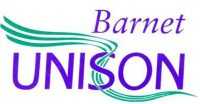Sheltered Housing – More Choice or Budget Saving?
Residential Options for Older People in Barnet with 24hr cover – a summary
At home with Life Line or Telecare
Lifeline is a pendant alarm. The alarm is worn round the neck. The wearer presses the pendant to raise the alarm. The control centre takes the call and can communicate with the wearer and/ or contact relatives, friends or the emergency services. For someone to have a lifeline they must be able to understand what an emergency is and they must be able to know they press the button in an emergency. They must also be able to physically able to activate the pendant.
For people who have difficulty using a Lifeline there is telecare alarms. The person must wear the equipment which may be an alarm attached to a belt or may be a pendant. The alarm is merely dependent on the wearer radically changing position from vertical to horizontal to be activated. The change in position could indicate the wearer has fallen. This alarm also connects to the control centre. Once the alarm has been raised a similar procedure follows as with the Lifeline.
People can have these systems and be in warden controlled or sheltered housing.
Care packages can also supplement these forms of support.
Warden Controlled.
The warden does not live on site and so is not accessible 24/7. In all other respects this form operates the same as sheltered housing. The resident should not expect the warden to carry out aspects of care, and certainly not routinely. Nonetheless the warden contributes to a very smooth support network for the resident e.g. helping the resident settle back in home following a stay in hospital. The warden has contact with each resident at least once/ day to make sure they are ok. Referrals are dealt with by Housing department (except where privately owned).
Care packages can also supplement this form of support.
Sheltered Housing
The warden is lives in the sheltered accommodation or is accessible 24/7. The warden can provide valuable information on the habits and background of residents which also contribute massively to OT and social work assessments – probably health-led assessments also. Again the warden is not expected to contribute to provision of individual care routinely but definitely contributes in many ways to the smooth support for a resident to remain in an independent setting. The warden has contact with each resident at least once/ day to make sure they are ok. Referrals are dealt with by Housing department (except where privately owned).
Care packages can also supplement these forms of support.
Extra Care Housing
This form of support is new. Residents have flats within the unit as with sheltered housing. As a minimum they have 24hr support available similar to that provided by wardens. However, there are care workers who can be used to provide care and personal care support day and night. The idea being to enable someone to remain in a home setting as long as possible. The need for care during the night does not place someone at risk of having to move to residential care in this setting. Referrals come through social services or are made direct to the scheme.
The care package would be assessed by a social worker but is provided within the extra care housing.
Residential Care
The resident would have a private room possibly with ensuite shower and toilet. This is 24hr care. All residents in this setting would be very dependent on care workers for most aspects of their daily living and be at risk at night. Increasingly the referrals to these units are for adults with dementia or high risk of falls. Referrals are through social services unless someone makes a private arrangement. Extra Care Housing is promoted as being a superior form to Residential Care which is why residential care will increasingly have the “heavier end” of the care spectrum.
Nursing Care
The resident here would have a private room possibly with ensuite shower and toilet. This is 24hr care. The staffing ratios are higher here than for residential homes and there are more nurses available throughout the day and night. Residents here have complex and intense care needs 24/7. An element of the care provided is nursing care e.g.: people needing 24hr oxygen and not being able to operate it independently; people requiring assistance of 2 to mobilise and/ or needing a hoist to get in or out of bed; people who are at high risk of developing pressure sores due to their dependence on others for moving at all.

